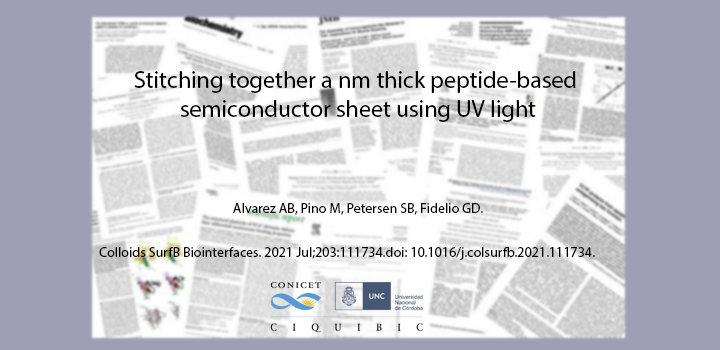Alvarez Bolaño et al. Colloids SurfB 2021
Langmuir monolayer allows for a two-dimensional nano-scale organization of amphiphilic molecules. We have adapted this technique to measure lateral and transverse conductivity in confined peptide nanosheets for the first time. We reported that two retro-isomers amphipathic peptides form stable monolayers showing a semiconductor-like behavior. Both peptides exhibit the same hydrophobicity and surface stability. They differ in the lateral conductivity and current-voltage due to the asymmetric peptide bond backbone orientation at the interface. Both peptides contain several tyrosines allowing the lateral crosslinking in neighboring molecules induced by UVB. UVB-light induces changes in the lateral conductivity and current-voltage behavior as well as monolayer heterogeneity monitored by Brewster Angle Microscopy. The semiconductor properties depend on the peptide bond backbone orientation and tyrosine crosslinking. Our results indicate that one may design extended nano-sheets with particular electric properties, reminiscent of semiconductors. We propose to exploit such properties for biosensing and neural interfaces.
Authors: Alvarez AB, Pino M, Petersen SB, Fidelio GD
Article: Stitching together a nm thick peptide-based semiconductor sheet using UV light. Alvarez AB, Pino M, Petersen SB, Fidelio GD. Colloids SurfB Biointerfaces. 2021 Jul;203:111734. doi: 10.1016/j.colsurfb.2021.111734. Epub 2021



